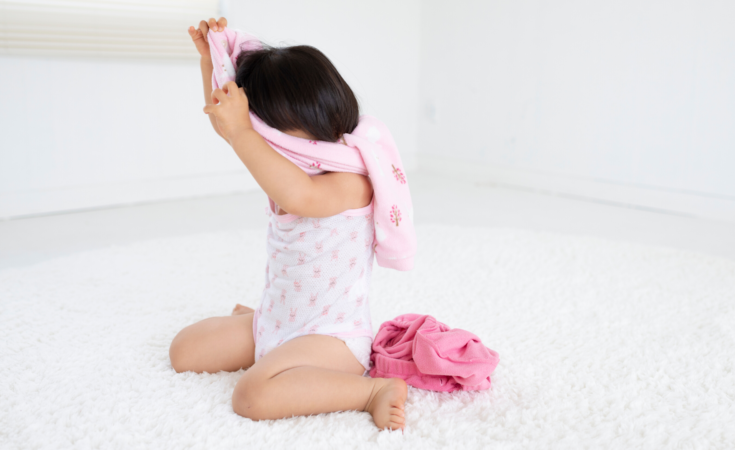Sewing for Kids is done differently from sewing for adults. Hence, you must remember that adult sewing rules do not apply to kids' dresses.
Your expert sewing can not give you the same results even if you put in all your efforts. Even if you created the best dress for the little angel, it may not fit.
Everybody may love the dress your made and the frills your decorated it with, but the big shock could be when that pretty dress does not fit at all! what you needed to know?
You know how to cut, create, stitch and you can make pretty smart dresses for yourself. That’s really great!
Then, one day your aunt requests you to make a simple frock for your niece.
Sewing for kids need consideration and adjustments.
You are an expert in making your dresses and your wardrobe testifies the fact.
No doubt you know the facts and figures of getting the right formula for that tiny little frock.
You put in all your efforts and created the best dress ever you could for the little angel.
Everybody loved the dress and the frills but the big shock came when the dress did not fit at all!
How is it possible?
You've done everything right!
You measured well, cut accurately, and sewed to perfection, and still people gave you glances as if ‘you did it’ or ‘we knew you couldn’t do it.’
After putting in so much effort if we get such a drastic result and worse reactions, then they are enough to make us paranoid about trying another baby dress.
What I learned after spoiling a lot of fabric and time, is that it was not the formula or our expertise that should be blamed.
The actual spoilsport is the way we understand kids’ body frame.
We set standards for adult bodies, whether male or female.
We understand, read, and study a lot for different shapes of the human body to understand fashion in that sense.
Do we know enough about the way things need to be treated when it comes to making children's clothes?
Let's go through some measures that explain sewing for kids done differently:
Table of Contents
1.BIG HEAD – KEEP THE NECK OPENING LONG
There is a lot of difference in the different stages of growth of a human body and considering this fact.
It is obvious that the babies and kids body is different than grown up body. So, the measurements will obviously be different.
When a baby is born, his head to chin length is 1/4 of his total body length.
As the baby grows, the proportion of length to his total body keeps on decreasing.
By the age of three, the length of head to chin is 1/5 of the body length.
On attaining full growth, the length of chin to head remains 1/8 of the body length.
Moreover, there are many other differences, which we must consider to save our precious time and energy to get the little dresses done :-
- Now, we know that kids have a big head. We must prepare and adjust the measurements for ease of wearing the dress.
- For this purpose, either we can keep the neck open partly more or keep the full length of the dress open from one side.
- By saying open, it does not mean keeping open like a door. You can get some zipper, button placements etc. to cover up the dress, once it’s worn.
2.BIG TUMMY – KEEP SOME LOOSENESS IN THE MIDDLE
- You must have noticed that kids have a big tummy also. For this reason, there is not much difference in the measurements of their chest, waist and hips.
- In fact, most of the times, all the three measurements of chest, waist and hips are the same. So, you don’t need to scratch your head to calculate the formula. What will be for the chest, will go down under as it is.
Ready-to-Use Chart for Body Measurement and Standard Measurement
Yes, one more thing, we need to consider here that kids have a bigger tummy.
So you must measure it well and make extra margin on the sides or front for it.
3.TOO MANY FORMULAS NOT REQUIRED
- The little cute dresses not require wide pleats and darts. They need extra looseness and ease of movement.
- Here, we considered that kids’ body length proportions are different than grown ups. In the same breath, I add that in proportion to their full length, kids have a lesser waist till ankle length, too.
- In ready made garments, my experience has always been such that if I buy the upper top of the size of the kid, then the lower would definitely be shorter and vice versa.
- When we are making efforts to stitch, we must either measure the kid individually or take a nicely fitted pants for making exactly the same.
- Small kids have a big tummy. For this reason, when they stand, they seem to appear as if they are standing erect. The fact is that they do not have bend in their spine, which makes them stand as they do.
- This standing position impacts their dressing in a way that the front length of the dress seems oddly short.
- To combat this problem, we must keep the front part of their tiny dresses about 3/4″ or 1″ extra.
- Kids Shoulder width and Armhole measurements are also 1/2″ to 1″ more than adults, for their ease of movement.
4.COMFORT AND EASE OF MOVEMENT ARE THE KEY
One more thing, which we must consider while making kids dresses is that kids grow very fast.
- Before we could wind up making one dress for them, they outgrow that and need another.
- We must keep sufficient margin in their dresses. It is a different story, if you are making a tiny dress just to use up the scrap of a beautiful fabric.
- When you are putting in so much efforts, it makes sense that you keep sufficient margins for growth in coming months.
Too tight cloths will hamper their growth, which I am sure you will not want for them.
- Too big or too loose dresses do not look attractive on kids, this extra margin must be covered up inside an extra stitch.
Next month, when your kid shows some growth, just remove this extra stitch and again the dress is ready to wear.
- Now, you may wonder that there are different ready made patterns available in the market, which are used in factories and mass production units of garments.
These patterns are based on age of a child and generally we also buy these clothes checking the age on the label.
But, while we are making a dress for the cute kids ourselves, making a guesswork and depending on the age of the child can backfire.
The best thing would be to measure the child, if you know the child yourself. If you are using measurements for a five year old, it would be better that you use the pattern of a seven year old instead of five year old’s pattern.
If the dress is slightly big, it can be used later but a shorter dress would be a big waste of your reputation.
(If you are stitching just for practice, as I used to do, then no worries.)




